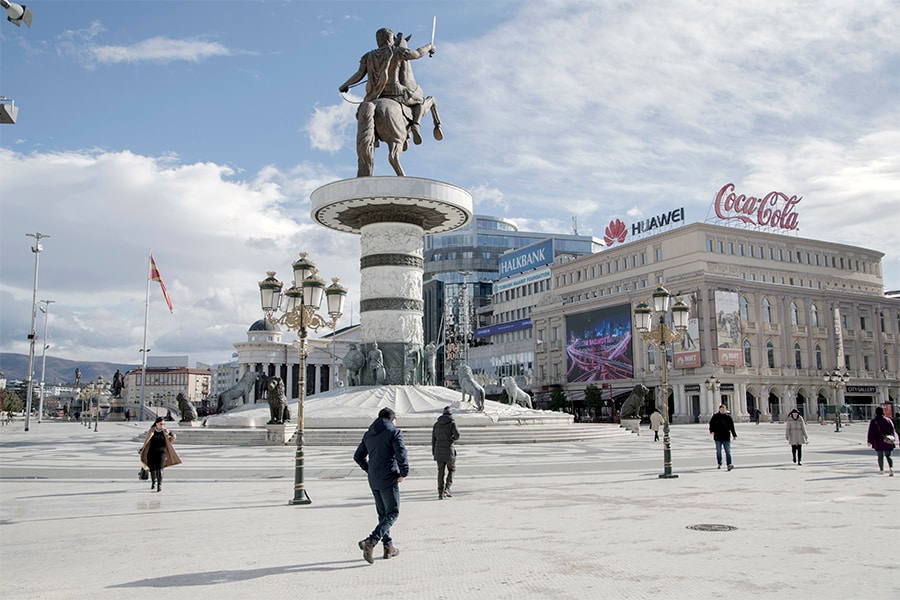
As Ukraine fights, does the EU owe it membership?
It is a question that will hang over a summit meeting of EU leaders starting Monday, and one made more urgent by Ukraine's demand for fast-track accession talks to join the bloc, which may not be decided before another meeting in late June
 Downtown Skopje, the capital of North Macedonia, on Feb. 27, 2020. North Macedonia and Albania are the farthest along as full-fledged candidates for European Union membership. (Loulou d'Aki/The New York Times)
Downtown Skopje, the capital of North Macedonia, on Feb. 27, 2020. North Macedonia and Albania are the farthest along as full-fledged candidates for European Union membership. (Loulou d'Aki/The New York Times)
BRUSSELS — With Ukraine defending European values and security against a blatant Russian invasion, what obligation does the European Union and NATO have toward Ukraine?
The moral answer may be obvious, as European and American governments vow support for Kyiv and are pouring money and arms into Ukraine. But the practical answers are complicated, as ever, and are dividing Europe.
Defying expectations, the EU has provided significant military aid to Ukraine and inflicted enormous sanctions on Russia, acting with speed and authority. But now it is confronting a more difficult problem: how to bind vulnerable countries such as Ukraine, Moldova and Georgia to Europe in a way that helps them and does not create a further security risk down the road.
It is a question that will hang over a summit meeting of EU leaders starting Monday, and one made more urgent by Ukraine’s demand for fast-track accession talks to join the bloc, which may not be decided before another meeting in late June.
Despite pressure to fast-track Ukraine, full membership for it or the other countries on Europe’s periphery in either NATO or the EU is unlikely for many years. But European leaders have already begun discussing ways to slowly integrate them and protect them.
©2019 New York Times News Service







